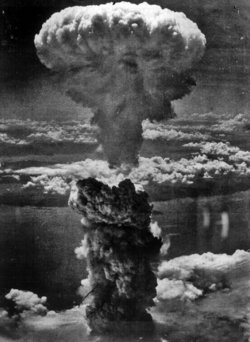In 2005, the number of Americans wounded in Iraq, 9,157, exceeded the number wounded in 2004, when the total was 7,956.
The deaths of two Americans announced by the United States military on Friday - a marine killed by gunfire in Falluja and a soldier killed by a roadside bomb in Baghdad - brought the total killed since the war in Iraq began in March 2003 to 2,178. The total wounded since the war began is 15,955.
In 2005, the single bloodiest month for American soldiers and marines was January, when 107 were killed and nearly 500 were wounded. At the time, American forces were conducting numerous operations to secure the country for the elections on Jan. 30. The second worst month was October, when 96 Americans were killed and 603 wounded.
More than half of all 2005 American military deaths, 427, were caused by homemade bombs, most of them planted along roadsides and detonated as vehicles passed. American commanders have said that roadside bombs, the leading cause of death in Iraq, have grown larger and more sophisticated. Many, for instance, are triggered by remote detonators and are large enough to destroy heavily armored tanks and troop carriers.
The totals were compiled by Iraq Coalition Casualty Count, a nonprofit group that tracks American service members killed and wounded in Iraq. The Associated Press, which keeps its own statistics, reported the year's death toll as slightly lower, saying that 841 had been killed.
Death totals for Iraqis have been more difficult to estimate, and vary widely. Iraq Body Count, an independent media-monitoring group, estimates that about 30,000 Iraqis have died since the war began in 2003.
On Saturday, violence flared across Iraq. In Khalis, north of Baghdad, a bomb killed five members of the Iraqi Islamic Party, a Sunni political party that defied insurgent threats and fielded candidates in the Dec. 15 election. Since 2003, at least 75 party members have been killed.
In central Baghdad, a roadside bomb struck an Iraqi police patrol, killing two officers.
In historical terms, the number of casualties in Iraq is still relatively small. At the height of the Vietnam War, the American military was sustaining 500 killed and wounded each week. At the Battle of the Somme in 1916, about 58,000 British soldiers were killed or wounded on the first day.
In interviews, American commanders have said the relatively unchanging number of deaths in Iraq from 2004 to 2005 belies the progress that had been made here against the guerrilla insurgency and in setting up democratic institutions. Three nationwide votes were held this year, including a referendum on a permanent constitution and an election to choose a four-year parliament.
Although the number of attacks against American and Iraqi forces in and around Baghdad has grown over the past year - to about 28 per day now from about 22 a year ago - only about 10 percent of those attacks inflict casualties, said Maj. Gen. William G. Webster Jr., the commander of American forces in and around Baghdad. A year ago, about 25 percent of attacks inflicted casualties.
More than 400 car and suicide bombs struck the country in 2005, although the number has dropped sharply in recent months. In April, for instance, there were 66 suicide and car bomb attacks, compared with 28 in November.
An Iraqi employee of The New York Times contributed reporting for this article.
Copyright 2005The New York Times Company







No comments:
Post a Comment